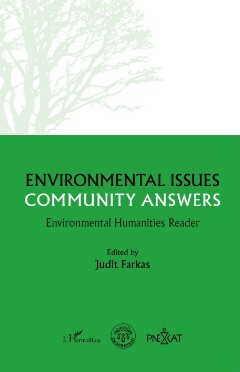Seite 213 [213]
ENVIRONMENTAL JUSTICE 211
The indispensable prerequisite of ensuring a healthy environment is the
definition of what is understood by a healthy environment. This has undergone
great transformations in the past centuries. The environment is the part of nature
with which humans are in constant interaction; the unity of natural and artificial
components surrounding the human being which includes, in addition to natural
elements, social and cultural components that influence individuals and the
functioning of society (Davies 2009). Nature becomes the environment in response
to the anthropogenic presence, to the mental and behavioral factors of the human
being (Bardos 2005). Our social-economic and natural environment is not merely
a descriptive feature but rather actively shapes our lives (Soja 2010). The
environment is perceived locally, and therefore environmental problems are often
local, affecting local people. The aggregate of the local problems, in turn, generate
and constitute regional and global processes. In addition, the number of existing,
emerging and new environmental risks is steadily growing. In parallel, the risk
perception of society also undergoes change (Beck 2003). Our behavior affects
the processes in maintaining and reinforcing the environment that give rise to
unequal, unjust situations. One of its most frequently mentioned examples is
commodification, the privatization of the environment, its interpretation as a
commodity (Eden 2009; Boros 2010). This approach ties the value of the
environment to its profit-generating ability and says that it can be economically
measured (Mälovics 2012b) (see the chapter on Economic responses to the challenges
of environmental sustainability). Nature is considered as a tool, a commodity (Eden
2009), whose use varies by individuals and social groups. The utilization of the
environment is often linked to the possession of power and practice of the influence
of power. All this causes great inequalities in several fields of life, putting certain
groups at an advantage and others at a disadvantage. The distribution of
environmental risks and harms is uneven, which may further deepen the differences
arising from the original social positions.
The environment is therefore important not only because of its natural values,
but also because of its impact on humans. Therefore, environmental injustice is
taken to mean not only negative states and processes caused by nature, but also
the discrepancies ingrained within the socio-economic structures. The
reinterpretation of the relationship between the environment and humanity reveals
that the inequalities experienced in the environment give rise to certain structures
that repeatedly influence our lives, social-economic acts, political decisions (Williams
1999), and the state of the environment — whether directly or indirectly. Inequalities
perpetuate unequal situations and social differences. One of their most palpable
features is that with the increase of health risks or the deterioration of the quality
of life, our right to a healthy environment is curtailed (Pal — Boros 2010).
In connection with the right to a healthy environment, two opposite approaches
need mentioning. The libertarian and liberal positions (Weston 2008) hold different
definitions on human rights, including the right to the environment. The former
emphasizes individual rights and limited government intervention; it also recognizes
the importance of protecting the environment and believes that voluntary and
market-driven mechanisms can effectively address environmental concerns while
respecting individual liberties. Libertarians recognize the right to a clean and
healthy environment and define it as a right to an environment free from
environmental harms and damages (Feinberg 1999). Under this conception, people

